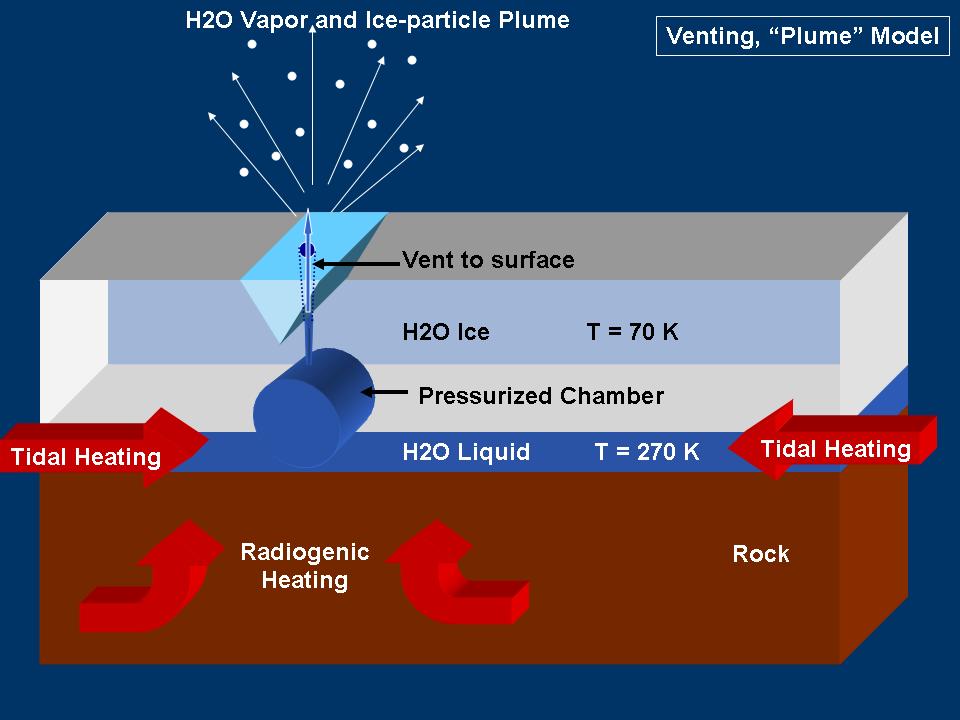Modeling ‘Warm’ Ice on Enceladus

| PIA Number | PIA07726 |
|---|---|
| Language |
|
This graphic represents a possible model for mechanisms that could generate the water vapor and tiny ice particles detected by Cassini over the southern polar terrain on Enceladus. This model shows venting by "plumes."
The Cassini-Huygens mission is a cooperative project of NASA, the European Space Agency and the Italian Space Agency. The Jet Propulsion Laboratory, a division of the California Institute of Technology in Pasadena, manages the mission for NASA's Science Mission Directorate, Washington, D.C. The Cassini orbiter and its two onboard cameras were designed, developed and assembled at JPL. The imaging operations center is based at the Space Science Institute in Boulder, Colo.
For more information about the Cassini-Huygens mission visit http://saturn.jpl.nasa.gov . The Cassini imaging team homepage is at http://ciclops.org .
Credit: NASA/JPL/Space Science Institute
